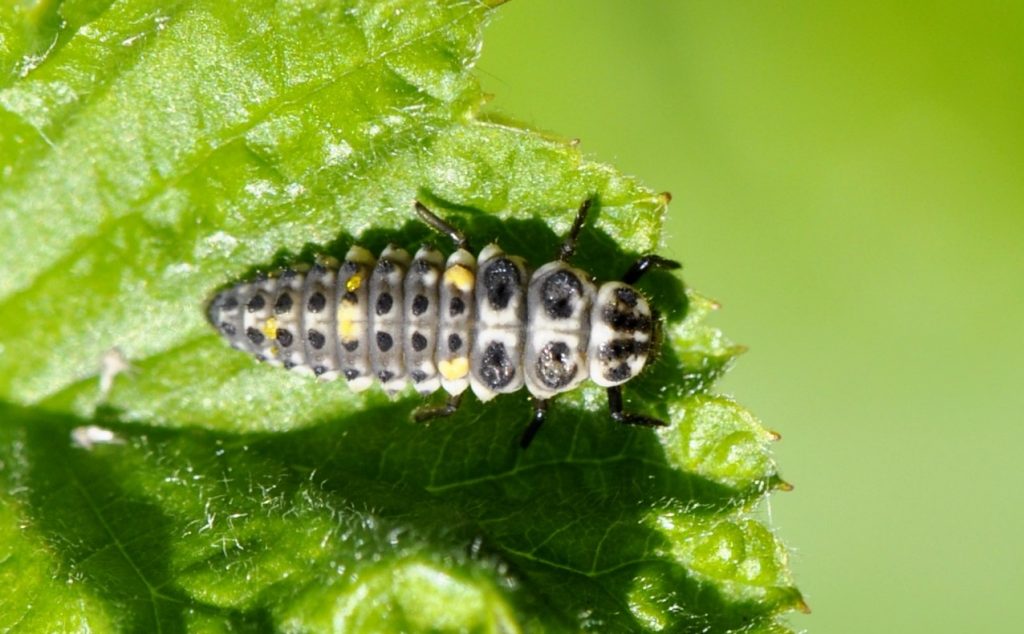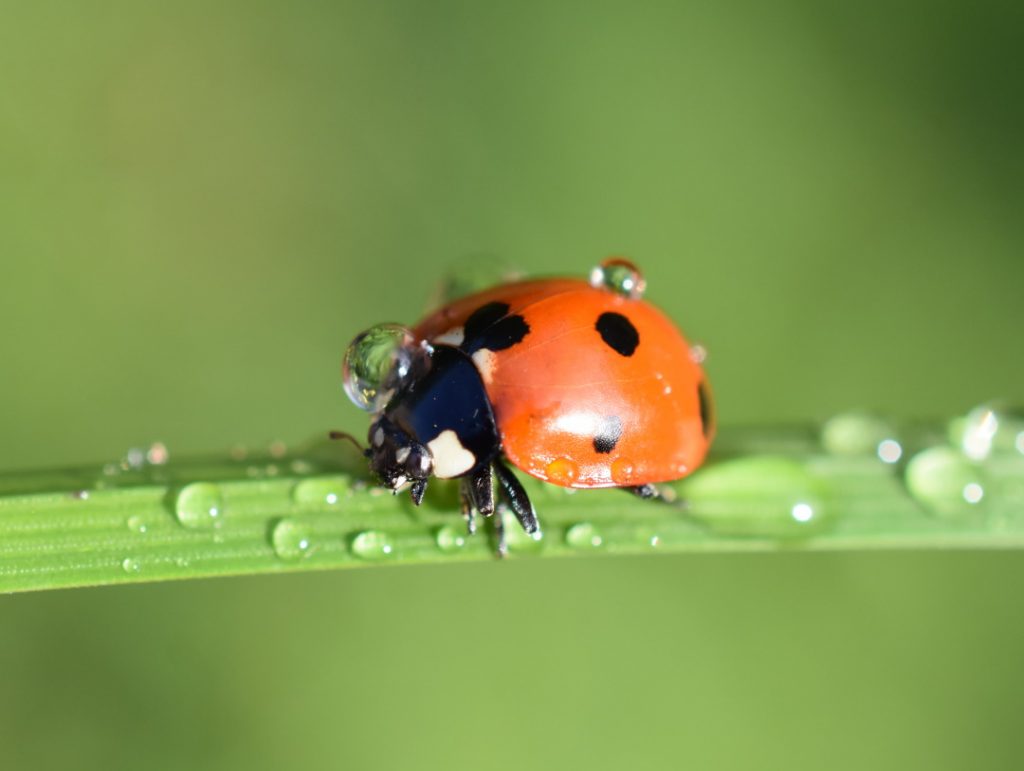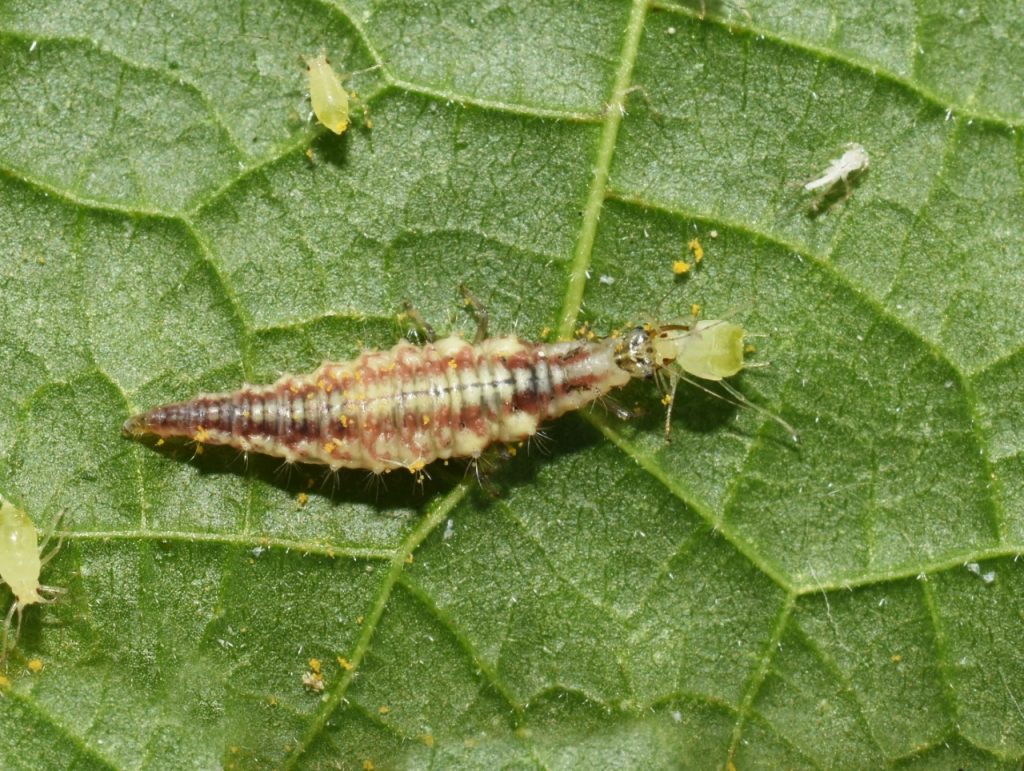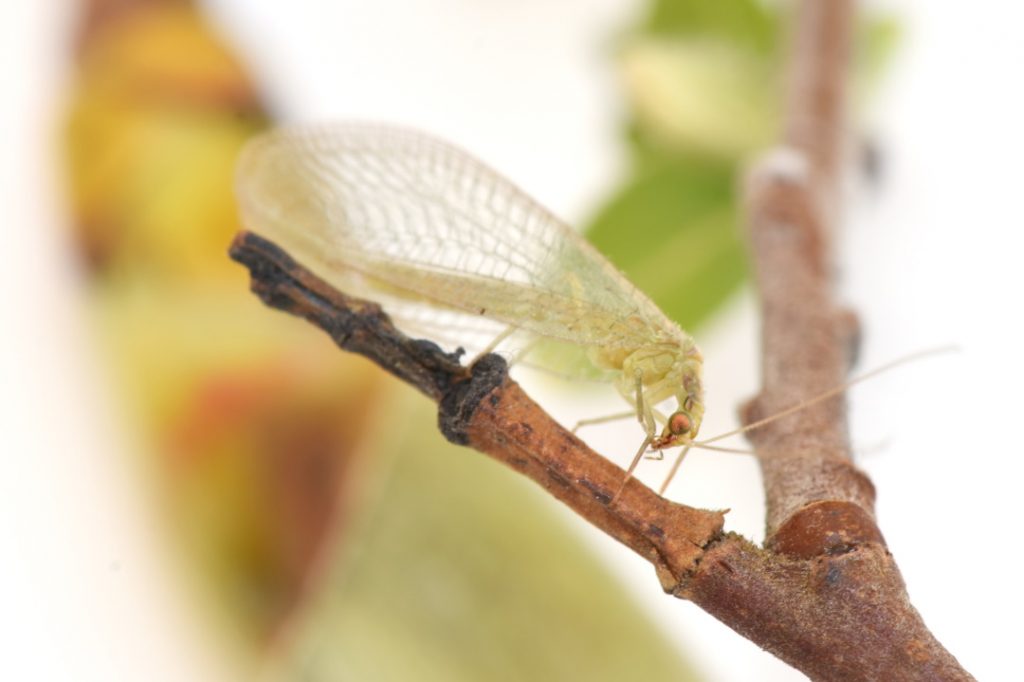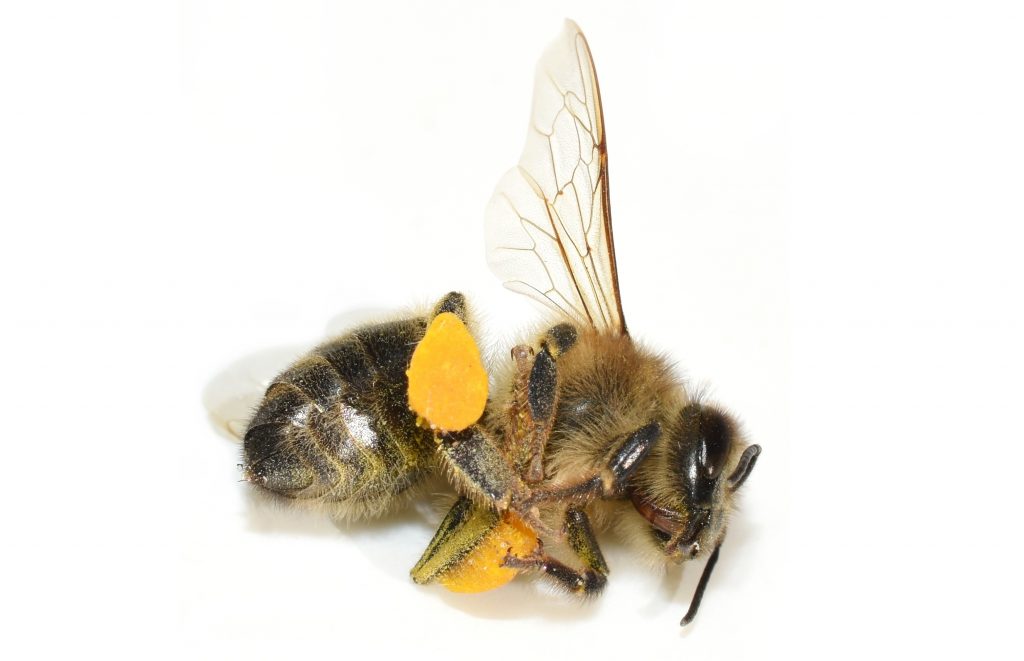
In May 2017, an article was published in Science Magazine entitled “Where have all the insects gone?” The article refers to a number of research projects that show that the insect biomass is in sharp decline in several places. In some areas of Germany, the population of flying insects has decreased by 75% over the last 27 years.
It is common, and completely normal, for the number of insects of a given species to vary greatly. Just think of wasps. Some years there are plenty of them, while there is little to see of them other years. When there are few individuals of one species, there may be abnormally many of another species. Such is the insect life. What is worrying about the trend we are seeing now is that the decline affects the total number of insects, not just a natural variation in some species from year to year. Since the aforementioned article was published, more research has been published that suggests the same thing: Insect populations are declining sharply, fast.
Insects are crucial to the biological process of pollination, in which an animal (usually an insect) feeds on the nectar or pollen offered by a plant. In the process of sucking up the sugary water or collecting the pollen from the plant’s flowers, which evolved with the purpose of attracting pollinating insects with bright colors acting like a “free food” signal, the insect is covered in the plant’s pollen, which contains its genetic code. When the pollen-covered insect moves on to feed on sexually compatible plant of the same species (or in some cases, even different species), reproduction occurs, and the sexually compatible plant produces seeds capable of growing into new plant individuals.
The decline of insects presents not only a natural crisis, but also an agricultural crisis.
Many plants produce tasty fruits or nuts that make up a great portion of the food we depend on. For this reason, a large portion of plants consumed by humans rely on pollination by insects to produce the fruit we seek. In fact, an article published on nature.com estimates that as much as 75% of agricultural crop species rely on animal pollination to some degree.
To be able to help preserve the insects, we need to identify the reasons for the decrease in number in insect populations. We know something about the causes, but much is still uncertain.
What threatens the insects?
Many pollinating insects are threatened by extinction. There are several, combined causes of the decline in insect populations: Both human activity and lack thereof are among the root causes of the problem. In many cases, there may be complex but known causes, and in other cases, we may not even know the cause. Fortunately, research is being conducted with the aim of uncovering at least some of the reasons why the number of insects is steadily decreasing.
For example, the use of pesticides in agriculture and in private gardens is one of the great threats to the insects. This is a well-documented fact. Many pesticides make the pollen and nectar of a plant poisonous, and insects that feed on it will die. It affects not only harmful insects, but also all insects we do in fact need, such as bees. Similarly, land changes (such as deforestation, reduction of wetland areas and large areas reserved for monocultures of grains and other food plants) threaten insect life.
The way we use land and run farms has changed in recent decades. For example, there are fewer animals grazing and fewer animals producing the nutritious feces on which some species depend. Some of our dung beetles are in sharp decline due to this grave lack of manure. Furthermore, when meadows are abandoned, tall plants displace smaller plants, and bushes and shrubs gradually take over the patches of land where wild flowers used to grow.
Evidently, there is a dependency relationship between plants and insects. If one disappears, a large portion of the other will also vanish, so the insects may face big difficulties when wildflower fields disappear, and vice versa.
Many insects are entirely dependent on special species of wild flowers, either because they specialize in eating pollen or nectar only from a few plants, or because their larvae require special plant varieties to feed on. If these plant species disappear, the insects that depend on them will also be gone. Wild flowers may disappear for several reasons, be it direct human influence (the intentional removal of wild plants) or climate change.
In some cases, there may also be lack of human intervention. For example, we may have failed to protect grazing animals or remove invasive species that out-compete the local wild flower population. When grass is no longer eaten or cut, high perennials will outperform the short, low-laying flowering plants.
Even new, introduced insect species can be harmful to the rest of the local insect populations. An example of this is introduction of the harlequin ladybird (Harmonia axyridis), also called the killer ladybird, to Norway. It came to Norway as a passenger, probably on garden plants. The problem is that the harlequin ladybird eats other insects, and can displace other ladybug species. In the worst case, we risk that several of the Norwegian ladybird species become extinct due to one single introduced species. There are many other examples of alien species that have been imported, with or without intention, which are a threat to nature.
How can we help the insects?
While solving the insect crisis may seem insurmountable, the root of the problem consists of the sum of harmful contributions of all of us. Every individual’s behavior may contribute to the problem. Likewise, every individual can contribute to solving the problem. Let’s summarize some of the most effective ways to help insects survive and thrive.
Shelter
Many insects rely on sheltered places to lay eggs and feed their larvae. In our often too neat gardens, such places may be low in number. This can be mended by having an “insect hotel” or two in the garden. Insect hotels can be purchased, or you can easily make them yourselves. A piece of wood in which you drill small holes is an example of a very simple insect hotel. Hollow stems from plants, cones, twigs and straws can be placed in a wooden box and give shelter to many different species. It is advantageous to attach a netting to the outside of the insect hotel, or the insects residing within it can easily be eaten by birds. You might also provide some natural, local clay for potter wasps and mason bees.
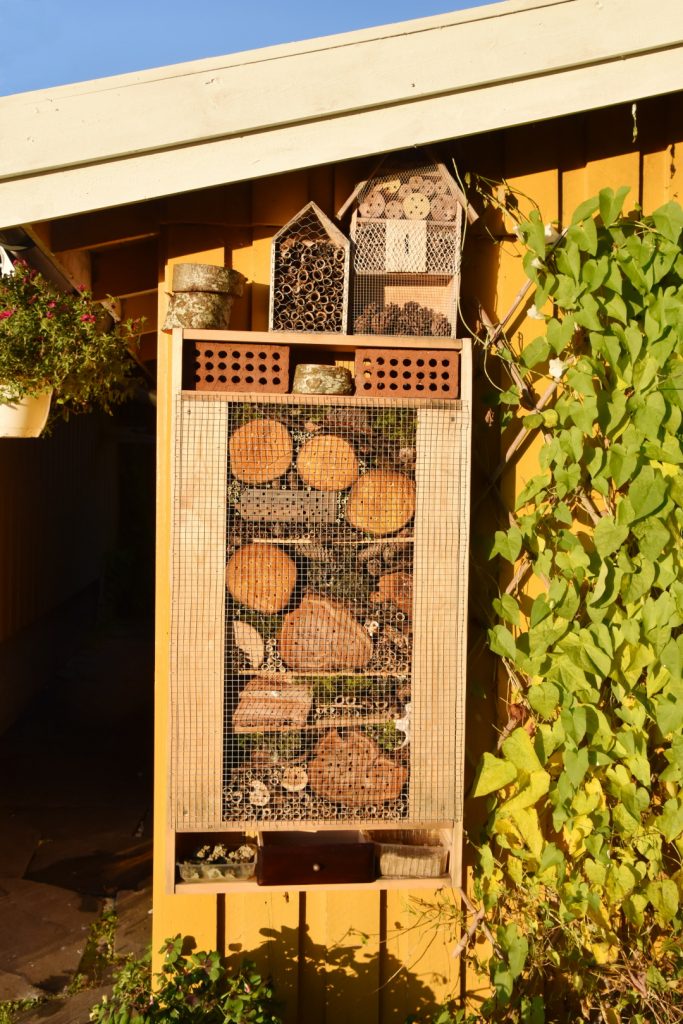
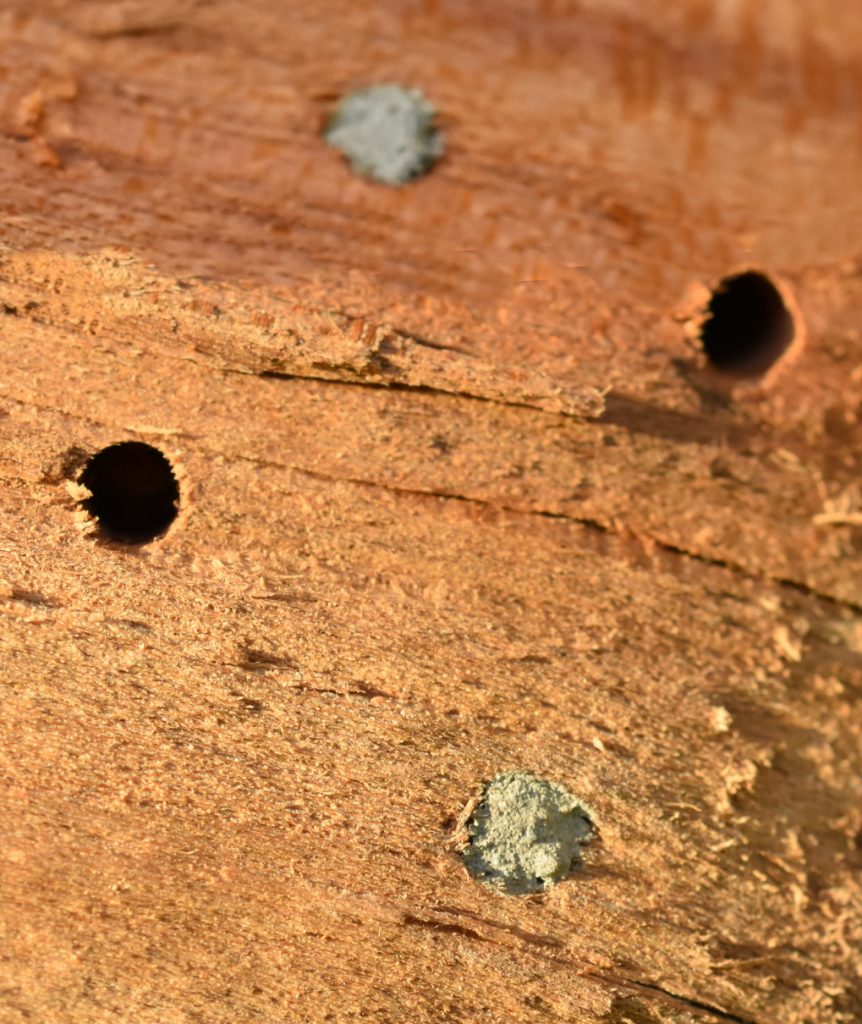
Practicing natural gardening
Plants and insects depend on each other for survival and reproduction. With so much of the natural territory of insects being occupied by humans, your garden is an important part of that ecosystem.
A lot of insects live on the plants we consider to be weeds. Stinging nettle is one such plant. Several insect species depend on the nettles for food. This applies, among other insects, to the small tortoiseshell butterfly (Aglais urticae) whose larvae feed on the nettles.
If you are a garden owner, the word “weed” may leave a bad taste in your mouth. I am not saying that you should let your beautiful garden end up like an overgrown junkyard; of course, we still want to keep our beloved exotic flowers, even the ones that do not support local insect life. But we can offer the insects some wild flowers in between our exotic beauties, and ensure that not all our cultivated plants have obstructive petals preventing insects from accessing the pollen and nectar.
In fact, many plant nurseries and other providers of garden plants offer plants that are good for insects, and even offer cheap seeds of wild flowers that insects will love. My point is that you can enjoy the exotic flowers that can grow in your area and still help the insects. If you don’t have a lawn where you can convert a small section into a wildflower field, it may still help to have a few flower pots with either wild flowers or recommended summer flowers or perennials.
In this article from Dorset Wildlife Trust, you can read about the importance of having insect-friendly habitats in gardens, parks and other areas where plants can grow.
There’s no common list of weeds that help insects thrive. Different areas have different native weeds. A good rule of thumb is to only remove weeds if they appear to compete with flowers. If we want tortoiseshell butterflies and other insects to thrive, we must tolerate some weeds in the garden. This means less work, more time to enjoy life and more beautiful insects to look at. At the same time, you can enjoy the lazy feeling of going easy on the gardening with good conscience and a good excuse, knowing that you’re passively reducing the likelihood of a catastrophe happening. If you have restrictive covenants or HOAs getting in the way of the natural flourishing of plants commonly considered weeds, I urge you to bring up the problems of over-gardening to the responsible bodies.
Following is a list of the essentials of natural gardening.
Leave the debris
Detached twigs, logs, dead leaves and other garden waste are also good for many species. In decomposing plant matter such as these, insects can hide from carnivores, find food and survive the winter.
Plant matter that is no longer attached to the plant is no longer protected by the plant’s immune system, and can therefore be readily broken down with time. Plant matter is full of nutrients that a vast number of organisms depend on, including many insects. While rotting logs and withered leaves may not be the most aesthetically pleasing to the human eye, leaving them in that state means doing mother nature a tremendous favor. A large portion of the food chain depends on unprotected plant matter, and the expansion of human habitats (along with the peculiar need of humans for extreme neatness) has robbed large areas of the world of this essential food source.
Plant wild flowers instead of grass
A well-groomed lawn may be good looking and nice to walk on, but for the insects. it´s a sad affair. Few insects can make use of grass. If you want your garden to be haven for our precious insects, let some patches of the lawn display clusters of wild flowers for them to feed on.
In order to acquire seeds of the plants that the local insect population requires, and in order to avoid planting invasive species, you can collect seeds from plants in the nearby area. Some organizations might even offer seeds for free if you do some digging around (no pun intended). Process the soil well by raking the top inch or so of soil and removing plant matter and debris. Don’t rake any deeper than that, or you risk activating dormant seeds of weeds. The area only needs to be prepared once, as wild flowers are hardy and used to weeds and compact soil. Sprinkle the seeds on top in early spring or just before the first frost in autumn (some flowers require a frost cycle to sprout in spring). Finally, compact the soil by walking on it or using a lawn roller. Wait, then enjoy the sight in spring. Cut flower fields once a year (after the flowering season) so that no bushes and tall perennials can take over. When you mow or cut your flowers, leave the flowers to decay on the ground for a week or two. This gives the plants a chance to reseed themselves. Don’t leave the plant matter to decay for too long, because this will release nutrients back into the soil. This might be a good thing in other growing operations, but wild flowers thrive in meager conditions and do not appreciate an abundance of nutrients. For this reason, you should also avoid fertilizing these areas.
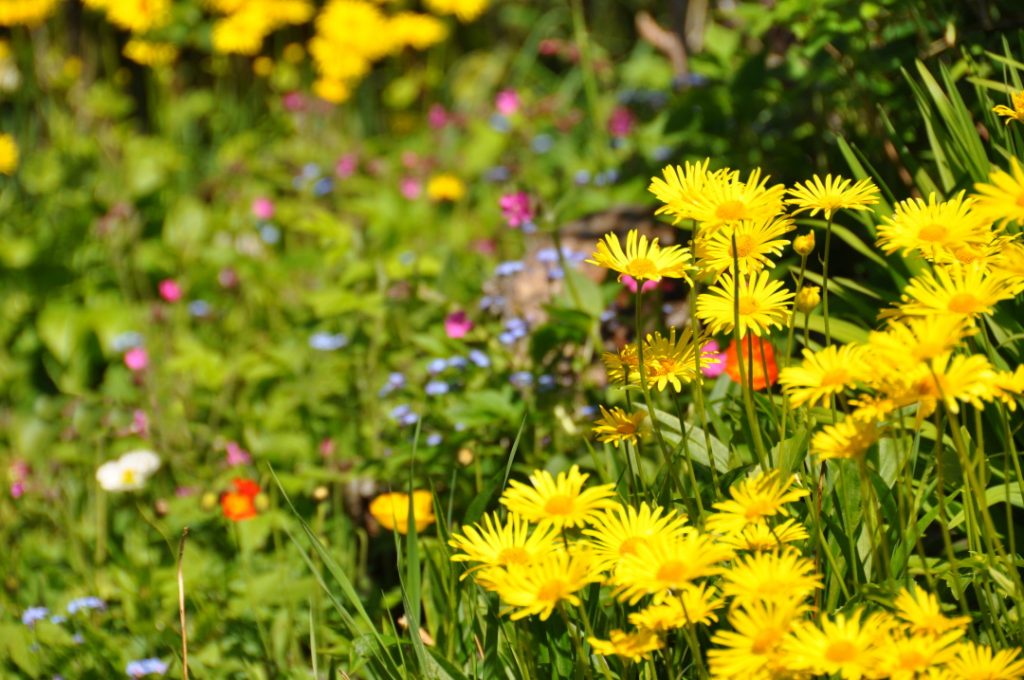
Many purchased plants are unfavorable to the insects, either because they produce scarce amounts of pollen, or because the pollen is difficult to get to. Filled flowers where pollen is hidden under several layers of petals, such as roses, are not particularly insect-friendly. Why not let wild flowers be a part of your garden? Bluebells, forget-me-nots and cranesbills can be a beautiful addition to your otherwise exotic selection.
Do not use insecticides or herbicides
Insecticides kill a lot of insects. Not only do they eradicate the ones you want to get rid of, but also the useful insects that pollinate your plants. A garden does not have to be chemically clean! Weeds and aphids are food for ladybugs or lacewing larvae, which can be introduced to your garden (learn how) in order to combat these nuisances. Nature will often self-correct in the absence of poison. Nature’s equilibrium is, perhaps surprisingly, fairly comfortable for humans.
Insecticides, especially neonicotinoids, have been implicated as the main culprit in the massive global decline of insect populations. Insecticides are particularly harmful to insects residing in hives (such as certain species of bees) because they tend to bring back the poison to their hive, thus eradicating entire colonies of their species.
Even herbicides, which are designed to kill weeds, can be harmful to insects. While research is relatively scarce, a 2021 meta-analysis found that there is evidence that glyphosate (a key ingredient in the popular weed killer Roundup) is toxic to bees. The consumer advocacy organization Drugwatch has an article about alternatives to Roundup.
Herbicides can also kill plants that insects rely on, thus contributing to the problem, even in the absence of insect toxicity.
Vote and contact your representatives
If you live in a democracy, the rules and regulations surrounding the use of harmful chemicals is in part the product of your vote and political initiatives. I urge you to use your vote, and use it wisely. Find out if there is a candidate that supports the strict regulation of industrial pesticides and grant them your vote.
Sadly, there is too often no such candidate. Therefore, we must write our representatives and express our concerns with the unchecked use of pesticides with disastrous results. Here is a change.org petition to ban neonicotinoids. There are many other petitions to sign, even outside the US.
Spread the word
We will not achieve our goal of a sustainable future if the focus lies solely on global warming and plastic pollution (both very important issues that must be solved). Despite semi-common, basic knowledge of phenomena such as colony collapse disorder amongst honey bees, awareness of the issue of insect population is not nearly as widespread as it must be for us to stand a chance. Therefore, it is imperative that you talk about it. Bring it up at dinner, or share this article. If each reader spreads the word to just three people, we may be able to make meaningful change.
I find that people are open to changing their ways, especially when it involves doing less work, and when presented with facts backed up by science. You will find a list of scholarly articles reinforcing the certainty of the need for urgent action at the end of this article.
Read the book
If you want to learn more about insects, what makes them beautiful and important, how each of us can help halt the disastrous trend, and you happen to know Norwegian, you may be interested in my book, Ode til insektene (Ode to insects in English). If you’re not Norwegian, stay tuned for the English e-book, coming soon.
10% of profits go to projects that aim to preserve insect populations.
References
Ceballos, G., Ehrlich, P. R., & Dirzo, R. (2017). Biological annihilation via the ongoing sixth mass extinction signaled by vertebrate population losses and declines. Proceedings of the National Academy of Sciences, 114(30), E6089–E6096. https://doi.org/10.1073/pnas.1704949114
Hallmann, C. A., Sorg, M., Jongejans, E., Siepel, H., Hofland, N., Schwan, H., … de Kroon, H. (2017). More than 75 percent decline over 27 years in total flying insect biomass in protected areas. PLOS ONE, 12(10), e0185809. https://doi.org/10.1371/journal.pone.0185809
Wong, S. (2017b, June 29). Strongest evidence yet that neonicotinoids are killing bees. Retrieved February 15, 2021, from https://www.newscientist.com/article/2139197-strongest-evidence-yet-that-neonicotinoids-are-killing-bees/
Stanley, D. A., & Raine, N. E. (2016). Chronic exposure to a neonicotinoid pesticide alters the interactions between bumblebees and wild plants. Functional Ecology, 30(7), 1132–1139. https://doi.org/10.1111/1365-2435.12644
Vázquez, D.E., Balbuena, M.S., Chaves, F. et al. Sleep in honey bees is affected by the herbicide glyphosate. Sci Rep 10, 10516 (2020). https://doi.org/10.1038/s41598-020-67477-6
Farina, W. M., Balbuena, M. S., Herbert, L. T., Mengoni Goñalons, C., & Vázquez, D. E. (2019). Effects of the Herbicide Glyphosate on Honey Bee Sensory and Cognitive Abilities: Individual Impairments with Implications for the Hive. Insects, 10(10), 354. https://doi.org/10.3390/insects10100354
Motta, E. V. S., Raymann, K., & Moran, N. A. (2018). Glyphosate perturbs the gut microbiota of honey bees. Proceedings of the National Academy of Sciences, 115(41), 10305–10310. https://doi.org/10.1073/pnas.1803880115
Battisti, L., Potrich, M., Sampaio, A. R., de Castilhos Ghisi, N., Costa-Maia, F. M., Abati, R., dos Reis Martinez, C. B., & Sofia, S. H. (2021). Is glyphosate toxic to bees? A meta-analytical review. Science of The Total Environment, 767, 145397. https://doi.org/10.1016/j.scitotenv.2021.145397
About the author
Hjørdis Bakke is a Norwegian entomologist (a biologist that specializes in insects) who teaches at Queen Maud University College. After having previously authored curricular books, she now focuses her efforts on insect preservation.
